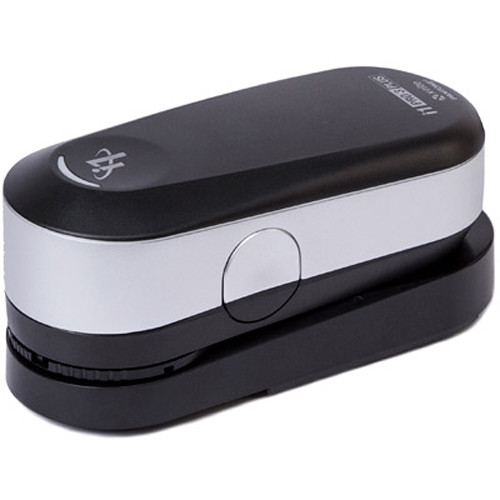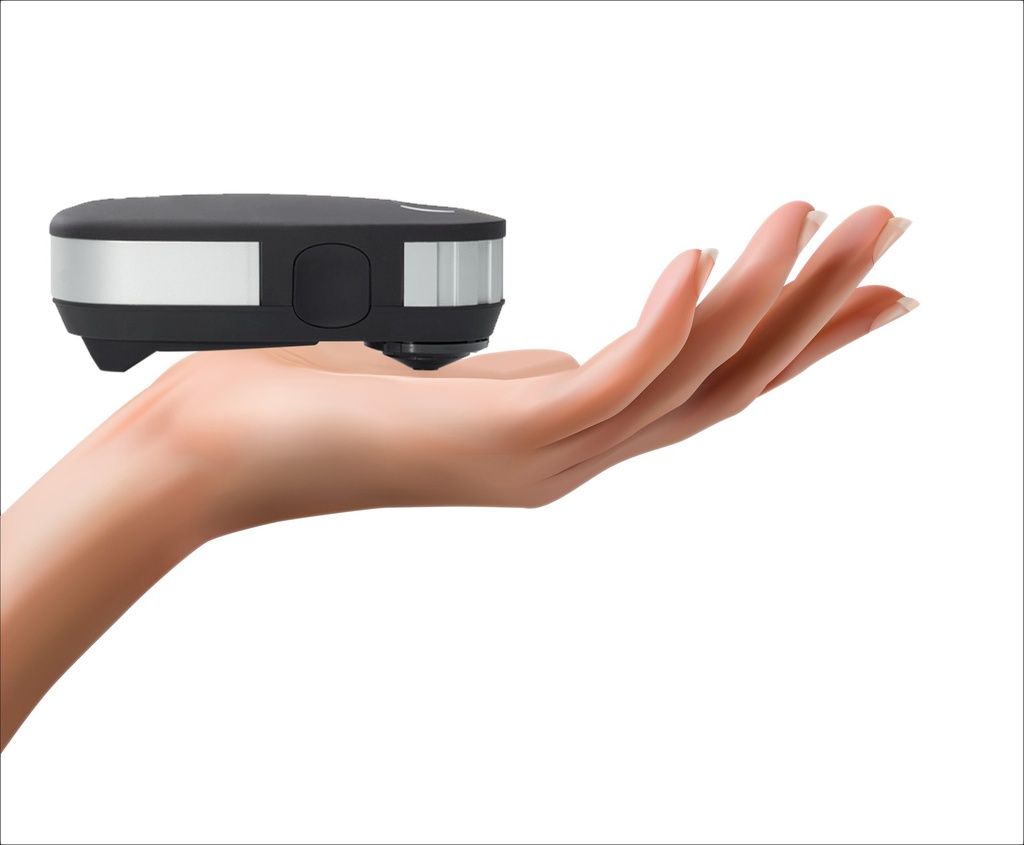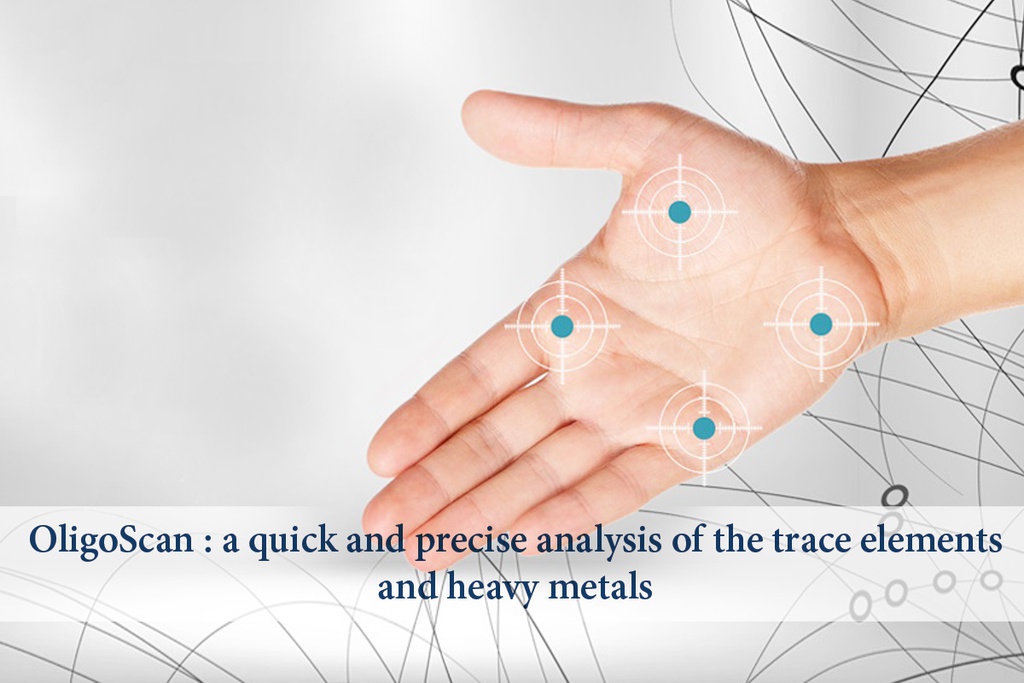Oligoscan
Internal Reference:
DENSOLIGOSC3
What is the OligoScan?
The OligoScan is a revolutionary and non-invasive device for testing Intracellular levels of minerals, trace elements, and heavy metals in the body's tissues using spectrophotometry. It provides immediate results and is particularly valued in integrative and functional medicine for its ability to offer a quick snapshot of a person's micronutrient status and potential toxic metal exposure.
We selected an X-Rite i1Pro3 device (Oligoscan), as the measuring instrument.
In the clinical applications, spectrophotometry is used to examine blood or tissues for clinical diagnosis.
How Does the OligoScan Work?
The OligoScan utilizes a technology known as spectrophotometry, a scientific method that measures how much light a substance absorbs.
The device measures certain points in the tissue, in the epithelial cells, in the palm of the hand. Here’s a step-by-step breakdown of how the OligoScan operates:
- Spectrophotometry Basics: Spectrophotometry involves emitting a specific wavelength of light on a sample and measuring the intensity of light that is either absorbed or reflected. Different substances absorb and reflect light in unique ways, creating a distinct spectral fingerprint.
- Measurement Process: During an OligoScan test, the device is placed against the skin, usually on the palm. It emits light into the skin and measures the intensity of the reflected light. This data is then analyzed to determine the concentration of various elements in the tissues.
- Data Analysis: The OligoScan's software processes the light absorption data, comparing it against a database of known spectral fingerprints for different minerals and metals. This analysis produces a detailed report on the levels of these substances in the body tissue.
Benefits of Oligoscan
- Non-invasive Testing: Unlike blood or urine tests, the OligoScan does not require needles or sample collection. This makes the process quick, painless, and stress-free for patients- and even safe for pregnant women!
- Immediate Results: The OligoScan provides instant feedback, allowing for on-the-spot analysis and discussion. This is particularly useful in clinical settings where timely intervention can be crucial.
- Comprehensive Analysis: The OligoScan measures a wide array of minerals, vitamins and heavy metals, offering a holistic view of a person's micronutrient status and toxic metal exposure. It measures 20 trace elements, minerals and the 14 most important toxic metals can be detected intracellularly (predominantly) and extracellularly in the surrounding tissue.
- Preventive Health: By identifying deficiencies and toxicities early, the OligoScan enables proactive management of health, potentially preventing the onset of chronic conditions related to mineral imbalances and heavy metal toxicity.
- Personalized Interventions: With detailed information on a patient’s mineral and metal levels, healthcare providers can tailor interventions to meet individual needs, optimizing dietary, supplement, and detoxification strategies.
Oligoscan results
Reading the results:
The results are clearly visualized using a traffic light system. The traffic light system divides the measured values into three different areas: Normal range (green), sub-optimal range above or below normal values (yellow) and deficiency or excess range (red). This makes it very easy to recognize deviations and initiate appropriate measures.
These readings will be analyzed by a the Spectrolabo dedicated software to generate the patient report.
In order to be able to generate a report (Check sample reportt) the below are needed:
1- The Oligoscan device
2- The Spectrolabo software (which NUMED will download and activate upon purchasing of the Oligoscan device and the related tests)
3- A test which can be purchased through NUMED
The following results can be determined with the Oligoscan:
- The 20 most important minerals and trace elements in the human body
- The ratio of the minerals to each other (ratios)
- 14 toxic metals
- The degree of toxic metal load
- Antioxidant capacity
- Interrelationships
- Active ingredient recommendations
- Nutritional assessment
Minerals:
Some
conclusions can also be drawn from the ratios between two minerals,
e.g:
- Ca/Mg high: parathyroid dominance and hyperinsulinism.
- Ca/P: protein metabolism. If high then anabolism with parasympathetic
dominance.
- K/Na low: stress reaction and chronic inflammation.
Antioxidant capacity
This indicator measures the oxidised caratinoids. It indicates the real state of health of the organism.
Correlations:
-
Acid-base balance
This index shows that the patient is in a phase of hyperacidity.
-
Insulin resistance
This index shows whether the patient has a predisposition to diabetes and
whether all the substances required for the pancreas to function optimally are
present.
-
Allergy status
This index shows whether the patient has a predisposition to allergies.
-
Enzymatic status
This index, similar to the "intestinal barrier function" index, shows
the functional status of the intestine, especially its enzymatic balance.
-
Assimilation of the small intestine
This index, similar to the enzyme status, also shows the state of the
intestine, in particular the degree of barrier function.
-
Metabolism
This index allows to see the level of metabolism, it is based on an algorithm
that takes into account the results for Cr, Mo and J.
-
Immune system
This index shows the level of the immune system in order to recognise whether
all the important components for its optimal function are present.
-
Cognitive function
This index shows the mental function, whether all the necessary components for
its optimal functioning are present.
- Hormonal status
Regeneration of the connective tissue
This index shows the state of the patient's healing ability, but also their "anti-wrinkle" capacity, if all the necessary components for good functioning are present.
Emotional status
This index shows the emotional function, but also the patient's capacity for self-control and anti-stress.
Cardiovascular system
This index shows the condition of the cardiovascular system, i.e. whether all the substances necessary for its function are present.
Nervous system
This index shows the state of nervous function, but also the patient's resistance to stress and mental relaxation.







